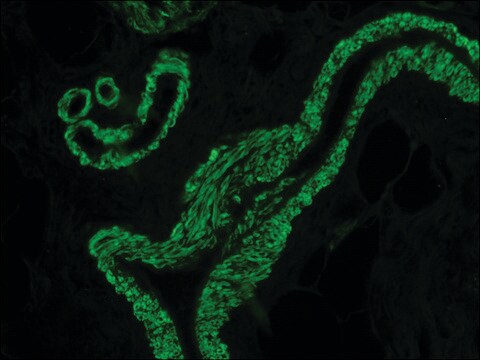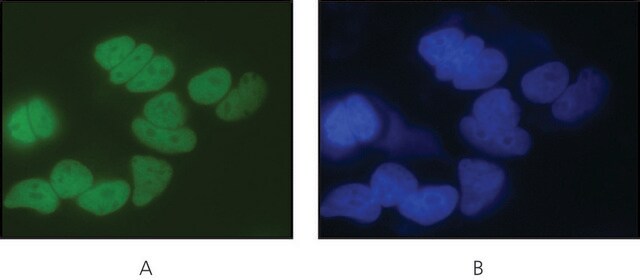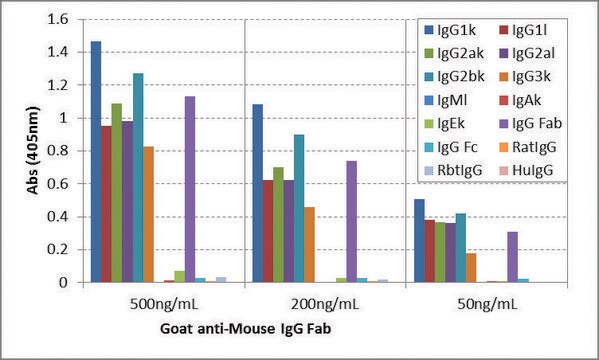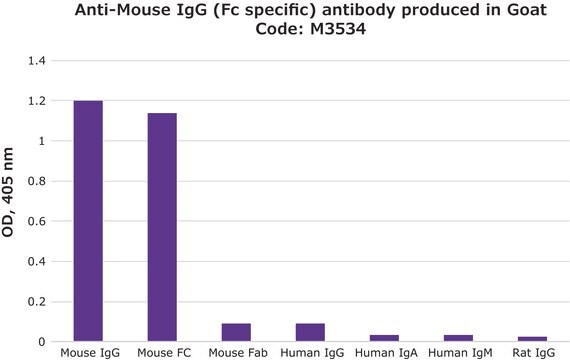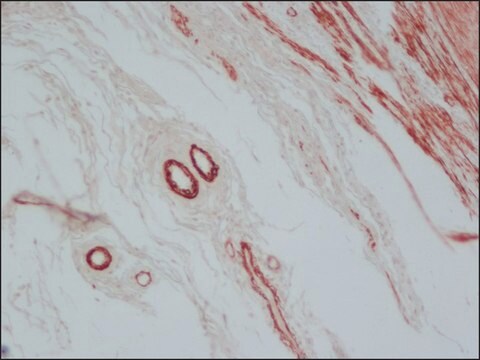M0659
Anti-Mouse IgG (Fab specific) F(ab′)2 fragment antibody produced in goat
affinity isolated antibody
Sinônimo(s):
Anti-Mouse Fab Fragment, Fab Specific Detection, Goat Anti-Mouse IgG Fab
About This Item
Produtos recomendados
fonte biológica
goat
Nível de qualidade
conjugado
unconjugated
forma do anticorpo
affinity isolated antibody
tipo de produto de anticorpo
secondary antibodies
clone
polyclonal
concentração
2.0 mg/mL
técnica(s)
indirect ELISA: suitable
Condições de expedição
dry ice
temperatura de armazenamento
−20°C
modificação pós-traducional do alvo
unmodified
Descrição geral
Anti-Mouse IgG (Fab specific) F(ab′)2 fragment antibody is monospecific as determined by immunoelectrophoresis versus normal mouse serum, mouse IgG and the Fab fragment of mouse IgG. The antibody does not react with the Fc fragment of mouse IgG. Moreover, no reactivity is observed with human κ or lambda light chain, IgG, IgA, IgM, IgD and IgE, bovine IgG and IgM, or horse IgG as determined by ELISA. In immunoelectrophoresis, the antibody preparation is found to consist only of the F(ab′)2 fragment of goat IgG, where specific antisera is applied to goat IgG fragments. No contamination with goat IgG whole molecule is observed.
Imunogênio
Aplicação
Outras notas
forma física
Exoneração de responsabilidade
Não está encontrando o produto certo?
Experimente o nosso Ferramenta de seleção de produtos.
Código de classe de armazenamento
12 - Non Combustible Liquids
Classe de risco de água (WGK)
nwg
Ponto de fulgor (°F)
Not applicable
Ponto de fulgor (°C)
Not applicable
Certificados de análise (COA)
Busque Certificados de análise (COA) digitando o Número do Lote do produto. Os números de lote e remessa podem ser encontrados no rótulo de um produto após a palavra “Lot” ou “Batch”.
Já possui este produto?
Encontre a documentação dos produtos que você adquiriu recentemente na biblioteca de documentos.
Os clientes também visualizaram
Nossa equipe de cientistas tem experiência em todas as áreas de pesquisa, incluindo Life Sciences, ciência de materiais, síntese química, cromatografia, química analítica e muitas outras.
Entre em contato com a assistência técnica


